This post may contain affiliate links. If you click on one and purchase something, I may receive an affiliate commission — at no extra cost to you.
This is Huangguoshu Waterfall, the largest waterfall in Asia.

Located in the southwestern Chinese province of Guizhou, Huangguoshu (Yellow Fruit Tree) Waterfall is this poor province’s pride and joy, its key tourist attraction. To get there, you’ll first need to get to the city of Anshun, roughly 90 kilometers or an 80-minute drive from the provincial capital of Guiyang. From there, you can choose to take day tours that will shuttle you to Huangguoshu Waterfall National Park and back, or you can take a local bus for ¥23 and stay at one of a dozen or so hotels nearby. The latter is an especially good idea during low season, when a two-bed room can be secured for around ¥80. (There’s also an option to take day tours from Guiyang, if you don’t mind that you’ll spend more time on the bus than in the park.)
I was somewhat hesitant about making the trip to Huangguoshu Waterfall, especially as the entrance fee is ¥180, with another ¥50 intrapark bus fee that’s basically mandatory given the size of the park. The key to making it worth your time and money is to budget at least 3-4 hours for the park so you can really explore it properly. For me, the best part wasn’t the Huangguoshu Waterfall itself, but discoveries elsewhere in the park.
My first stop was the Douputang Waterfall, known as the widest of the waterfalls in the park. I’m told that during high season it can take an hour to just visit this one spot given how crowded the pathways get.
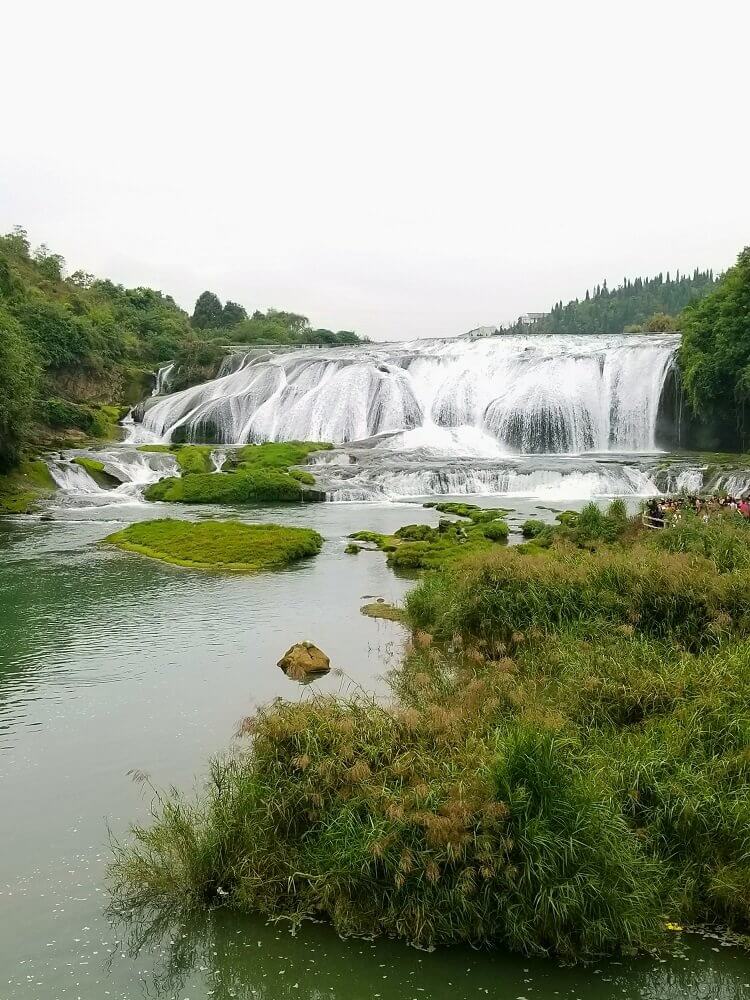
From there you’re typically directed to get back on the intrapark bus to get to the grand waterfall, but walking the 500 or so meters on the footpath will provide views that most visitors miss.
A small pavilion here, a honorary statue there, the roar of the water thundering down the slope as I approached the grand Huangguoshu Waterfall.
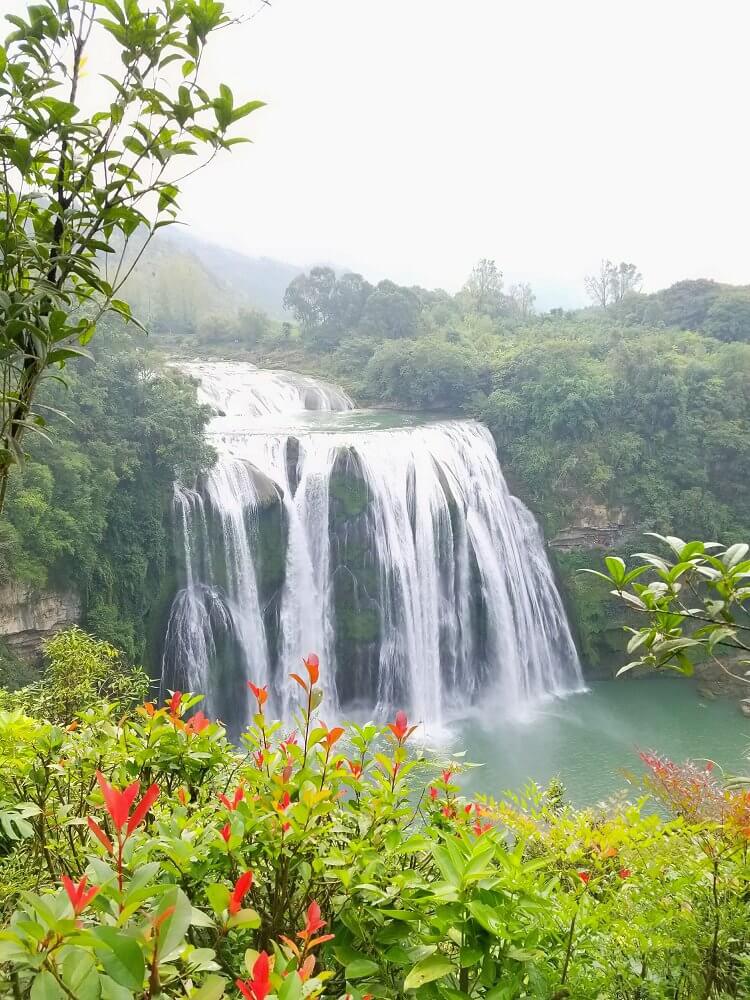
Just before I made my way down to see the waterfall closer, I saw what surprised me the most in the park: a Catholic church. While historic Catholic churches exist throughout China despite the country’s current policies, I was still fascinated.
I crossed the street to see if there was any explanation, and finding none, ventured inside the courtyard to find someone to ask. The church is here because those who lived here built it long before the area became a formal tourist attraction, said the man I found. And yes it is, he replied, when I asked if it’s still in use.
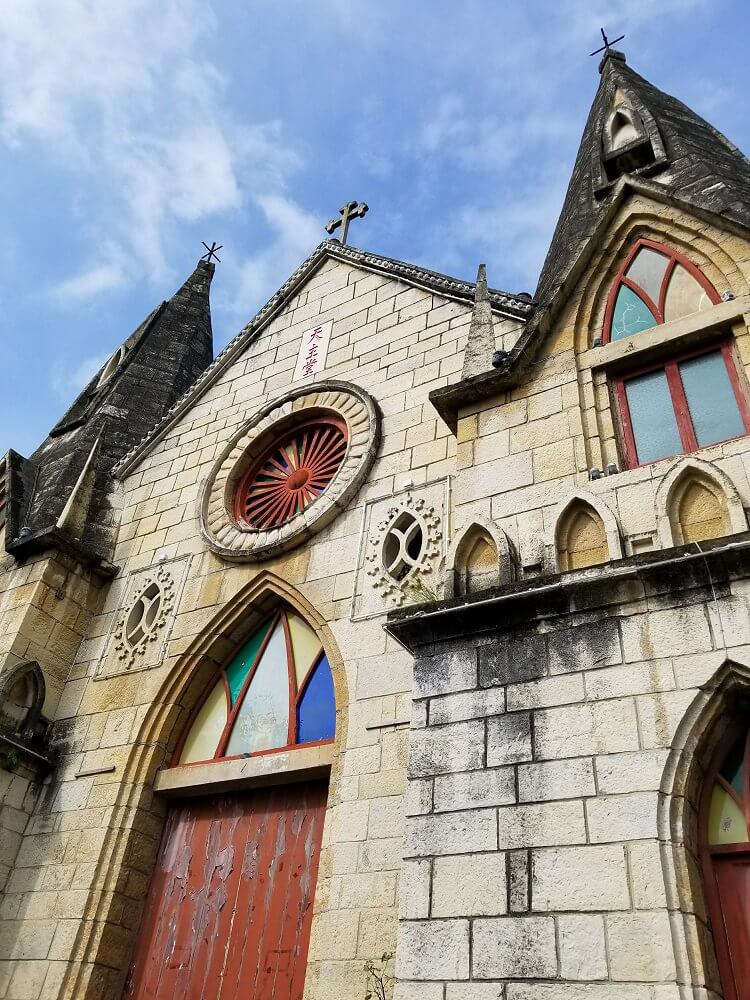
Not wanting to overstay my welcome considering I’d pulled him away from his TV show, I bid him adieu and went down the pathway to see Huangguoshu Waterfall from the main viewpoints. (Side note: before you enter the park, there will be folks all around town trying to sell you ponchos, telling you they’re necessary at the grand waterfall. They’re not. There is indeed a refreshing mist coming off of the waterfall, but you’ll likely welcome it instead of wanting to repel it, especially in the warmer months.)
I’ve never been to Niagara Falls, but I’ve been to many a waterfall in my travels, and in some ways, I was a little disappointed when I saw Huangguoshu Waterfall. Was it large? Yes. But it seemed to lack the force and power that embodies other famous waterfalls around the world. Perhaps a visit during rainy season would have proved it more true to its title as the largest waterfall in Asia. I am also told that there’s a dam controlling the water flow, so perhaps my disappointment was man-made, a human assault on nature’s true power.
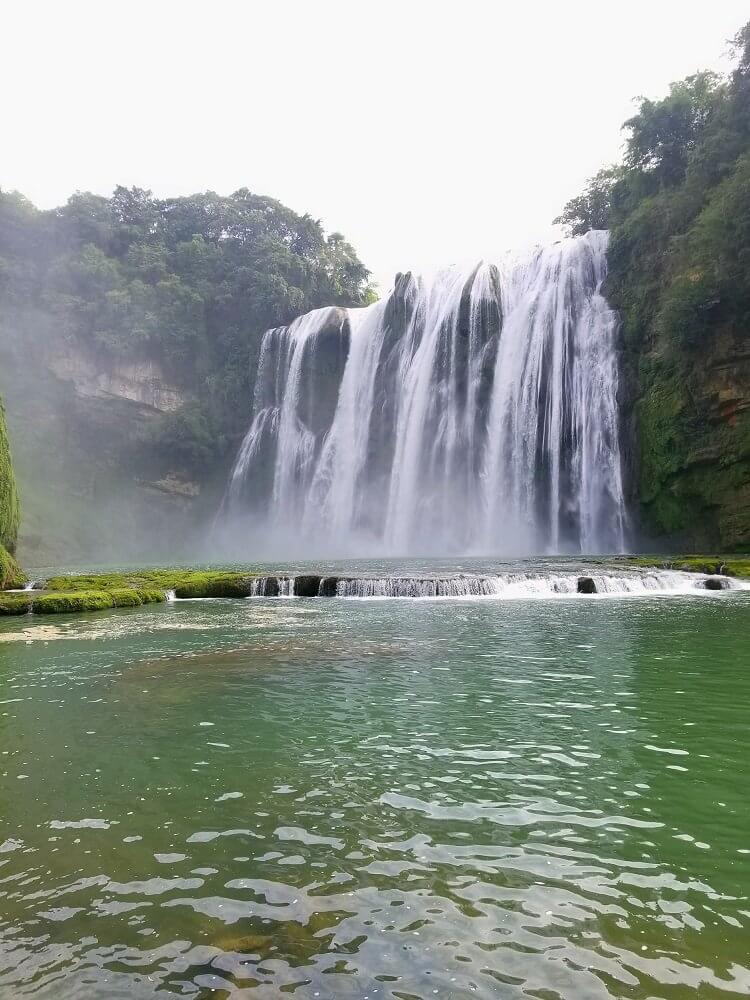
The third main attraction area in the park is known as Tianxingqiao, or Heavenly Star Bridge. Many tourists skip this scenic area due to a lack of time, but it was here that I found the most beautiful parts of Huangguoshu Waterfall National Park.
There were large caves, ancient trees, serene ponds, stone formations, and more waterfalls. These were probably my favorite spots in the park. (It also helped that there were way fewer people in this area.)
If you love chasing waterfalls, Huangguoshu Waterfall National Park is a great place for it. Just try your best to avoid the summer holidays, National Day Golden Week (early October), and Chinese New Year Golden Week (January or February).
Pin it to share it!
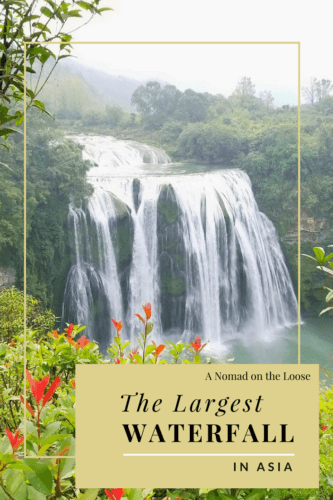






Wow it looks absolutely impressive! Beautiful! Thanks for sharing and teaching me something new today - I didn’t know Asias biggest waterfall is in China!
Haha I didn’t know either until I was literally in Guizhou province!
Oooh interesting! I thought it was going to be in Laos because I’ve heard about they’re amazing waterfalls! This one is stunning!
That’s definitely a good guess, I’ve heard that too! Hmm, this makes me feel like I should add a little poll to the post and see where people guess. I think I would have probably guessed somewhere like Borneo. But China’s large so I guess bigger probability haha.
Wow! That waterfall is seriously incredible. I wouldn’t never know it existed so I’m really glad to learn about it in your post! Would love to see it in person one day.
Hope you get to make the trip some day!
[…] more about Asia’s largest waterfall (below) on A Nomad on the […]
[…] a look here if you are curious where the largest waterfall in Asia […]
How long did you actually stay in the park exploring the area? is it 3 to 4 hours?
this will helps us to plan as we need to get back to Anshun West train station.
Thanks
Hey Edwin,
Yes, roughly 4 hours. Enjoy!
Visited Oct. 14 ’18, on a day of cool overcast; the park itself was very interesting, while the falls were viewed from some distance; there was a moderate flow of water, and Huangguoshu was certainly, interesting, although as noted, viewed somewhat from afar; moderate crowds around.
Very much recommended, although would have benefited from more time in the area; was on day tour from Guoyang; yet, it still comes as a surprise that this is described as among the largest falls in China/East Asia, but then, the prospect from the viewing platform is a little restricted, the force being partly concealed by vegetation, and at a sharp angle to the distant spectator.
Huangguoshu very much commended as worth a visit and plenty of time in the area.
So glad to hear you enjoyed your time at Huangguoshu, David!
I agree, I visited in autumn as well and felt it wasn’t as big as I would imagine given its title as the largest. But I think that’s just because it wasn’t rainy season and because of the viewing platform setup, like you mentioned.
Safe travels when the current global situation passes!
Thank you, Rowena,
Huangguoshu was part of an itinerary prepared by my wife, who is from Changsha, Hunan, this being a Guizhou sector; previous travel, in the same vein, has included Jiuzhaiguo and Zhangjiajie, and trusting on a hasty clearance of this pandemic,
With best Wishes.